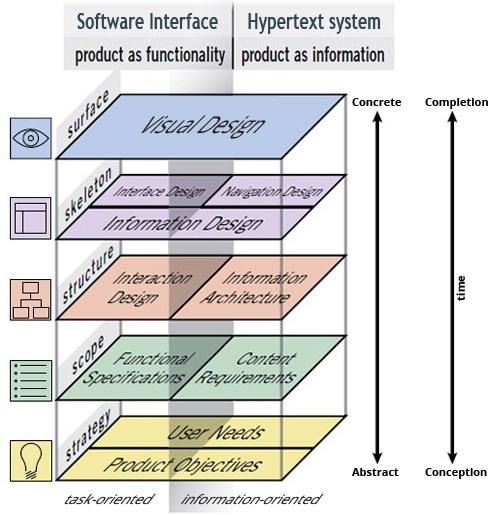In today’s digital age, user experience (UX) design has become an increasingly important aspect of creating successful products and services. UX design is the process of designing and optimizing the user’s experience with a product or service. A good UX design can make the difference between a successful product and one that fails. In this article, we will explore the Jesse James Garret framework for UX design, which is a widely used and effective framework for creating high-quality user experiences.
The Importance of UX Design
In today’s fast-paced and competitive digital world, the quality of user experience can make all the difference. The benefits of good UX design are numerous, including increased user satisfaction, improved user retention, increased engagement, and increased revenue. Good UX design can also help differentiate your product or service from competitors, improve brand reputation, and drive customer loyalty.
The Jesse James Garret Framework
Jesse James Garret is a renowned UX designer and founder of Adaptive Path, a UX design consultancy. Garret’s framework for UX design includes five elements that work together to create a successful user experience. These elements are:
- Strategy
- Scope
- Structure
- Skeleton
- Surface
Let’s explore each element in more detail.
Element 1: Strategy
The first element of Garret’s framework is strategy. This involves understanding the business goals and user needs for the product or service. It is important to define the target audience, understand their needs, and align business goals with user needs. The strategy element sets the foundation for the entire UX design process.
Element 2: Scope
The second element of Garret’s framework is scope. This involves defining the features and functionality of the product or service. It is important to define the scope based on user needs and business goals, and prioritize features based on their importance. The scope element helps ensure that the product or service meets user needs while staying within budget and time constraints.
Element 3: Structure
The third element of Garret’s framework is structure. This involves organizing and categorizing information and features in a logical and intuitive manner. The structure element helps users find what they need quickly and easily, and helps reduce cognitive load. It is important to consider user mental models and common conventions when designing the structure of a product or service.
Element 4: Skeleton
The fourth element of Garret’s framework is skeleton. This involves creating a low-fidelity prototype or wireframe of the product or service. The skeleton element helps visualize the structure and layout of the product or service, and allows for testing and feedback before investing too much time and resources in development.
Element 5: Surface
The fifth and final element of Garret’s framework is surface. This involves creating the visual and interactive design of the product or service. The surface element includes the visual design, typography, color scheme, and interaction design. It is important to create a visually appealing and easy-to-use design that aligns with user needs and business goals.
Key Takeaway
The Jesse James Garret framework for UX design is a powerful tool for creating high-quality user experiences. By understanding and implementing each of the five elements of the framework, designers can create products and services that meet user needs while achieving business goals. By focusing on strategy, scope, structure, skeleton, and surface, designers can create user experiences that are intuitive, efficient, and enjoyable.
It’s important to note that the five elements of Garret’s framework are not necessarily linear or sequential. The design process often involves iterating and revising each element based on feedback and testing. The goal is to create a user experience that is continuously improved and refined.
In addition, it’s important to consider the broader context in which the product or service will be used. This includes understanding the user’s environment, goals, and motivations, as well as any cultural or social factors that may impact the user’s experience.
Overall, the Jesse James Garret framework provides a solid foundation for UX designers to create high-quality user experiences. By focusing on the five elements of strategy, scope, structure, skeleton, and surface, designers can create products and services that are both functional and aesthetically pleasing.
Conclusion
In conclusion, UX design is a critical aspect of creating successful products and services in today’s digital age. The Jesse James Garret framework provides a useful tool for designers to create high-quality user experiences. By focusing on strategy, scope, structure, skeleton, and surface, designers can create products and services that meet user needs while achieving business goals. With a focus on continuous improvement and iteration, designers can create user experiences that are intuitive, efficient, and enjoyable.
